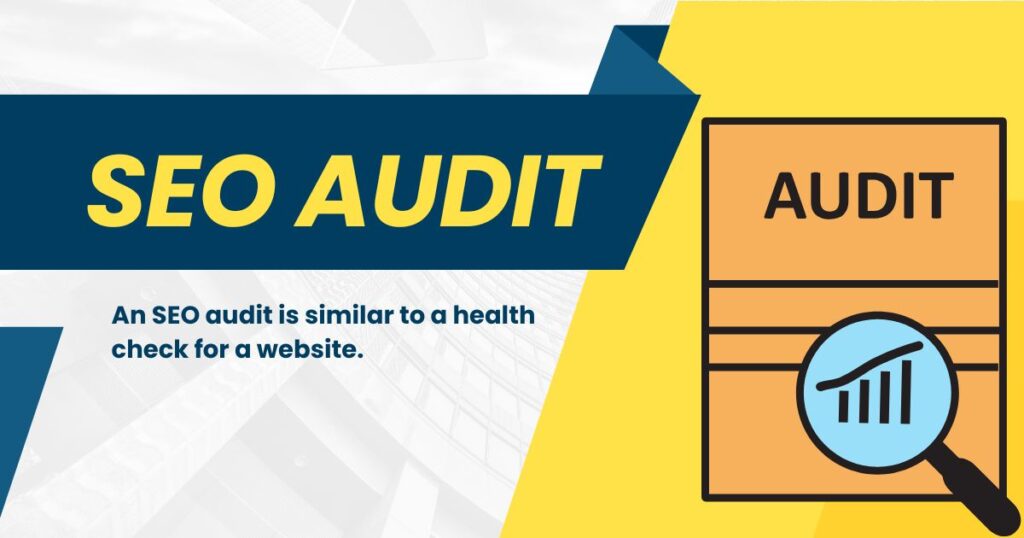The Ultimate Guide to SEO Audits

An SEO audit is similar to a health check for a website. Is your website reaching its full potential in search engine rankings? Are there hidden problems holding you back from getting more traffic? Your best friend is this comprehensive guideline covering all you need to know about SEO audits. What are they, why are they important, and how do I carry one off efficiently at last?
By the time you’ve read through this article, you’ll have a full-scale set of guidelines for boosting your website to work at maximum speed and revamping your SEO strategy. Whether you are new to the game of search engine optimization or an old hand at it, there are valuable things for everyone here.
What Is an SEO Audit?
The purpose of an SEO audit is to assess the situation your website is in with search engine optimization. That means looking at strengths and weaknesses for you, from technical issues to quality of content to keyword rankings and health ratings on backlinks.
The highest goal of an SEO audit is to spot opportunities to grow your organic traffic and help make it easier for search engines. It is like using a magnifying glass on every element in the site that could affect ranking, from load time and mobile usability to this text’s keywords–and even Meta info if you have that.
Why Is an SEO Audit Important?
Performing regular SEO audits is critical for sustaining long-term success on search engines like Google. Here’s why it’s crucial:
- Improves Site Rankings: An SEO-optimized site is more likely to rank higher in search engine results pages (SERPs). This increases organic traffic and online visibility.
- Identifies Roadblocks: Audits reveal hidden technical flaws like broken links, slow loading times, and crawlability issues that could be negatively affecting your performance.
- Adapts to Algorithm Changes: Search engines like Google frequently update their algorithms. Regular audits help you stay ahead of these changes.
- Enhances User Experience (UX): SEO isn’t just for search engines. An optimized site improves user satisfaction by delivering fast load times, mobile-friendly designs, and relevant content.
By conducting an SEO audit, you ensure that your website not only attracts traffic but also converts visitors into loyal users or customers.
How to Perform an SEO Audit
Conducting an SEO audit might feel overwhelming, but breaking it down into manageable steps makes the process straightforward. Below is a practical, step-by-step guide to running a thorough SEO audit.
Step 1. Analyze Your Technical SEO
Technical SEO is the foundation of your website’s optimization. If search engines can’t crawl or index your site, all other efforts may be in vain. Here are some key areas to examine:
1.1 Check Crawlability
Use tools like Google Search Console and Screaming Frog to ensure search engines can crawl your entire website. Look for:
- Broken links
- Orphan pages (pages with no internal links pointing to them)
- Errors in robots.txt or sitemap.xml files
1.2 Evaluate Site Speed
Run your site through tools like Google PageSpeed Insights or GTmetrix to identify performance bottlenecks. Factors impacting speed include large image sizes, unoptimized code, and lack of browser caching.
1.3 Mobile-Friendliness
With most web traffic originating from mobile devices, responsive design is critical. Use Google’s Mobile-Friendly Test tool to ensure your site delivers a seamless experience across all screen sizes.
Step 2. Review Your On-Page SEO
On-page SEO focuses on content optimization and HTML elements. Here’s what to check:
2.1 Optimize Title Tags and Meta Descriptions
Ensure every page on your site has a unique, keyword-optimized title tag (around 60 characters) and meta description (up to 155 characters). These elements impact both rankings and click-through rates.
2.2 Use Keywords Strategically
Confirm that your target keywords naturally appear in the following places:
- Main headlines (H1 tags)
- Subheadings (H2, H3 tags)
- Content body, especially the first 100 words
- Image alt text
But be wary of keyword stuffing, which could result in penalties.
2.3 Improve Content Quality
Your content should be engaging, informative, and relevant to your audience. Review existing content for:
- Readability (use platforms like Hemingway Editor to enhance clarity)
- Up-to-date information
- Target audience alignment
2.4 Optimize Internal Linking
Ensure you strategically link to other pages within your website using effective anchor text. Internal links help search engines understand your site’s structure and improve user navigation.
Step 3. Audit Off-Page SEO
Off-page SEO primarily revolves around backlinks, which are crucial for establishing your domain authority. Here’s how to approach this step:
3.1 Assess Your Backlink Profile
Use tools like Ahrefs, Moz, or SEMrush to analyze your backlinks. Look for:
- Total number of backlinks
- Diversity of linking domains
- The anchor text used in the backlinks
Remove or disavow spammy links that might harm your site.
3.2 Monitor Brand Mentions
Track where your brand is mentioned online. Tools like Google Alerts or Mention can help you find unlinked brand mentions, which you can request to turn into backlinks.
Step 4. Evaluate User Experience (UX)
Good UX is now a ranking factor due to Google’s Core Web Vitals update. Here’s what to check:
- Bounce Rate: High bounce rates might indicate user dissatisfaction with your site.
- Time on Page: Are visitors spending enough time engaging with your content?
- Site Structure: Make sure your navigation is intuitive, with clear menus and breadcrumbs.
Step 5. Monitor Analytics and KPIs
Use analytics tools like Google Analytics and Google Search Console to monitor crucial SEO metrics. Key performance indicators (KPIs) you should track include:
- Organic traffic growth
- Click-through rates (CTR)
- Number of indexed pages
- Average keyword rankings
- Conversion rates
Consistently reviewing these metrics ensures you stay on track in achieving your SEO goals.
Tools for Conducting SEO Audits
An efficient SEO audit requires robust tools. Here are some top recommendations:
- Google Tools: Google Analytics, Google Search Console, and Google PageSpeed Insights
- Crawling Tools: Screaming Frog, Ahrefs, and SEMrush
- Content Optimization Tools: Hemingway Editor, Clearscope, and Grammarly
How Often Should You Do an SEO Audit?
SEO is not a one-time effort. Large enterprises may do audits quarterly, while smaller businesses might conduct them biannually or whenever significant changes (e.g., site redesigns or algorithm updates) occur.
Take Your SEO Efforts to the Next Level
Search Engine Optimization (SEO) has become a top priority for businesses that want to bolster their online presence. By following this guide, you can gather valuable insights into how your website is working and discover strategies for raising the ranking of your site on search engines. Start doing an SEO audit today – there are all kinds of profitable new ground waiting to be broken! Whether you’re starting an SEO program or are currently middle of one, remember: Persistence pays.








